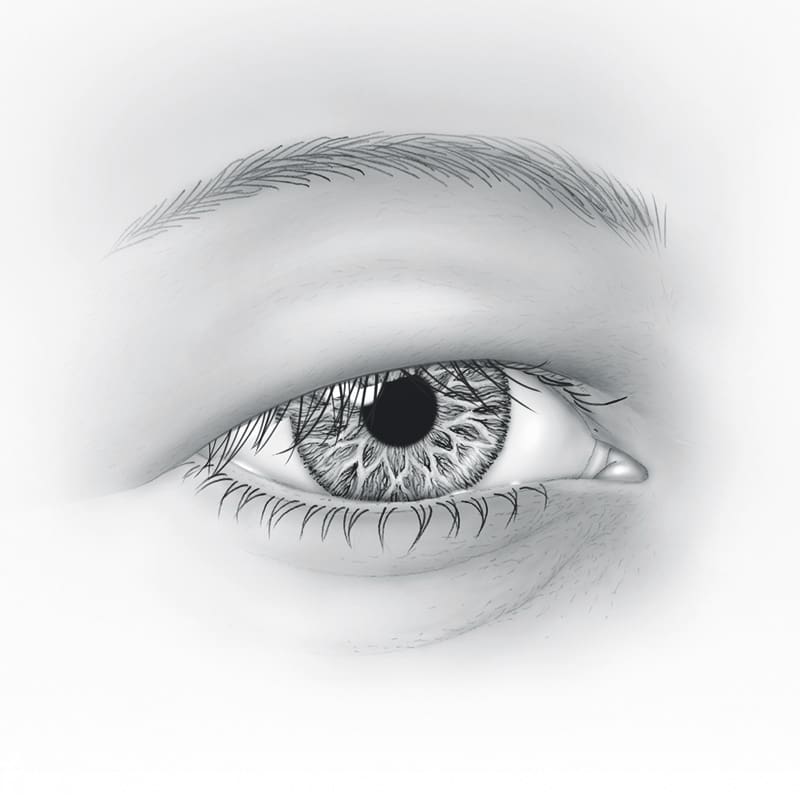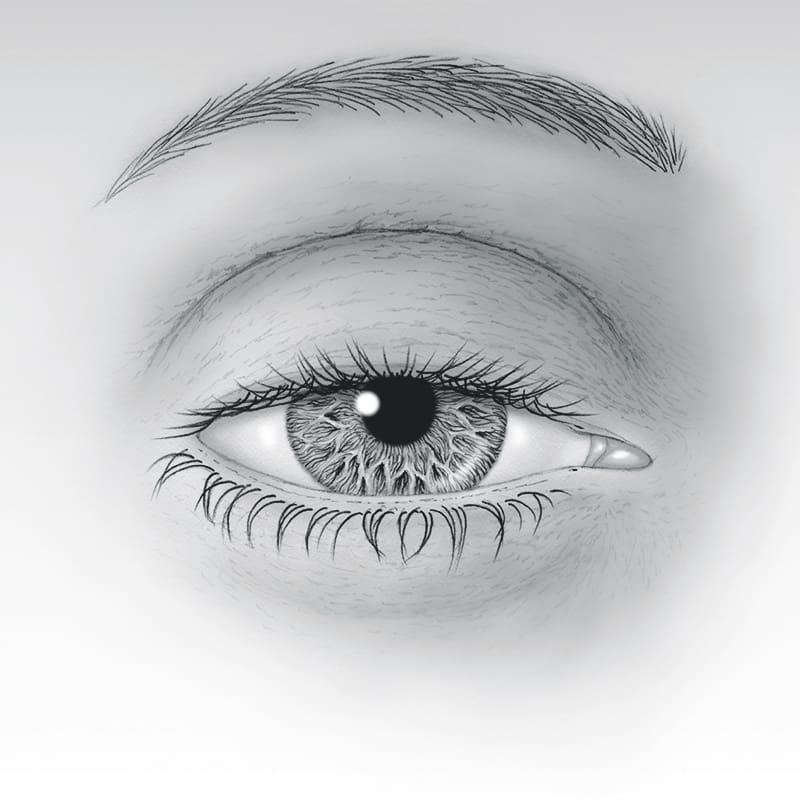Excess Eyelid Skin and Blepharoplasty (Upper Eyelid Lift Surgery)
Why Does Upper Eyelid Skin Change?
As we age, the skin on our upper eyelids can become loose, wrinkled, or heavy. This happens because the skin stretches and thins, and the fat around the eyes may shift forward. Genetics and sun exposure can speed up these changes.
In some people, the extra skin can even droop far enough to block peripheral (side) vision. This can make everyday tasks like reading, driving, or watching TV more difficult.

What Is Upper Eyelid Blepharoplasty?
Upper eyelid blepharoplasty is a surgery that removes extra skin and sometimes fat from the upper eyelids. It can be done for:
• Functional reasons (to improve vision and comfort)
• Cosmetic reasons (to improve appearance)
• Often, both
Functional surgery is considered medically necessary if droopy eyelids interfere with vision. Your oculofacial plastic surgeon will perform tests to see if this applies to you. Insurance may cover the cost if certain criteria are met.
Cosmetic surgery is done to improve appearance. It reduces excess skin, opens up the area above the eyes, and can restore a more youthful look. Cosmetic surgery is not covered by insurance.

What Happens During Surgery?
The surgeon removes extra skin and sometimes fat from the upper eyelid. The incision is placed in the natural crease of the eyelid, where it usually heals with little to no visible scarring.
Stitches may be dissolvable or removed later, depending on your surgeon’s approach. The goal is to create a more open, rested appearance while preserving the natural shape of the eyes.
After Surgery
• Cold compresses help reduce swelling and bruising during the first few days.
• Antibiotic ointment may be prescribed.
• Limit activity and keep your head elevated to help healing.
• Discomfort is usually mild and managed with over-the-counter pain relievers (avoid aspirin or ibuprofen unless advised otherwise).
Most people can return to normal activities in 1 to 2 weeks.
Risks and Complications
All surgeries have risks, though most patients recover well. Possible issues include:
• Bruising or swelling (common and temporary)
• Bleeding or infection (uncommon)
• Dry eyes or irritation
• Small lumps or cysts along the incision (usually resolve over time)
• Eyelid shape or height differences between eyes
• Rare need for touch-up surgery later on
Your surgeon will aim for symmetry, but exact results can’t be guaranteed. It’s easier to remove additional skin later than to fix an overcorrection.
Summary
Upper eyelid blepharoplasty can improve vision and restore a more refreshed, youthful appearance. Whether for functional or cosmetic reasons, your oculofacial plastic surgeon will help you decide the right approach and guide you through a safe recovery.